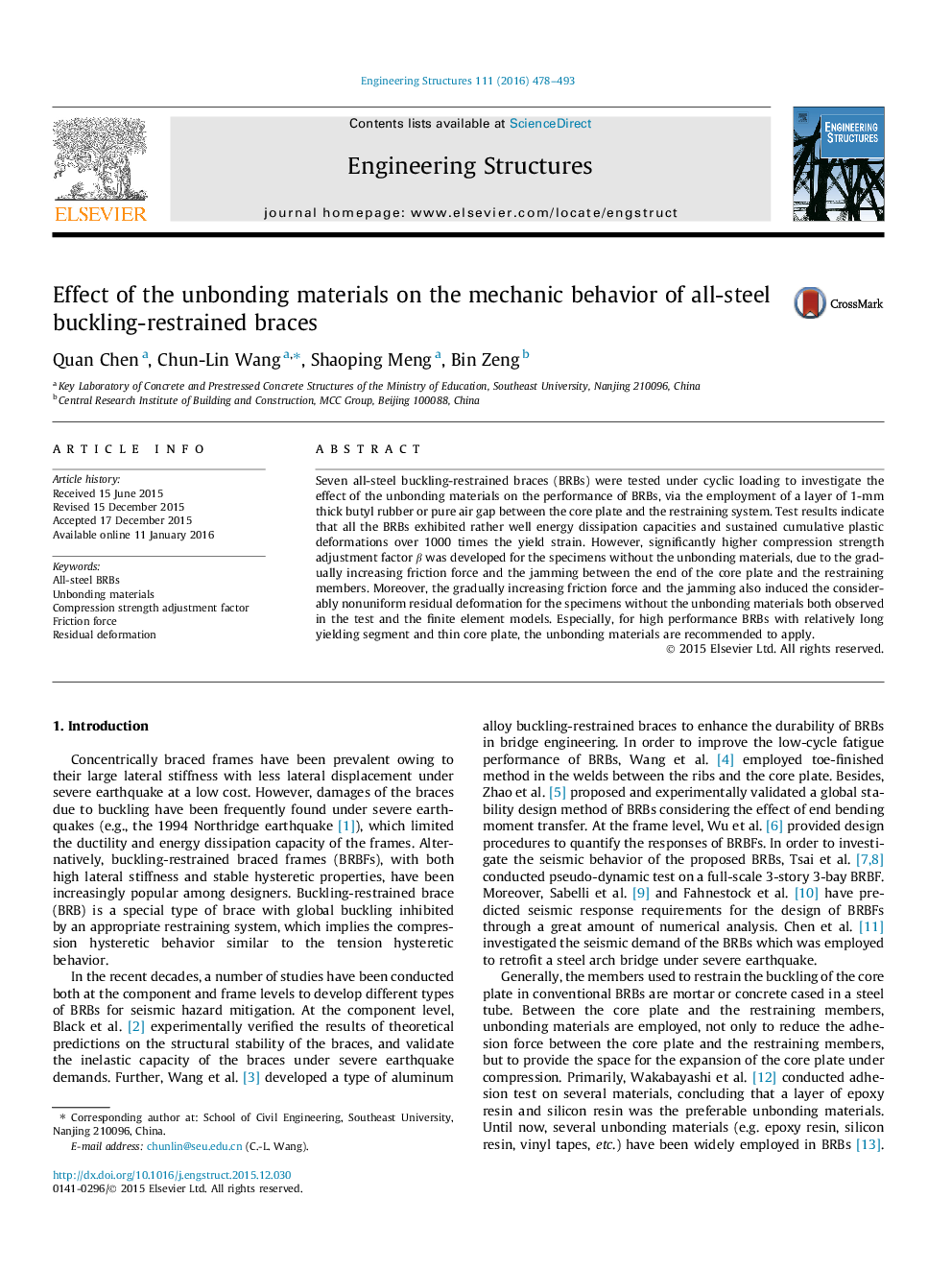| Article ID | Journal | Published Year | Pages | File Type |
|---|---|---|---|---|
| 265884 | Engineering Structures | 2016 | 16 Pages |
•All-steel BRBs with and without unbonding materials were experimentally compared.•BRBs without unbonding materials had higher compression strength adjustment factor.•BRBs without unbonding materials demonstrated great strain concentration.•Theoretical formula of the compression strength adjustment factor was proposed.•Unbonding materials should be employed for high performance all-steel BRBs.
Seven all-steel buckling-restrained braces (BRBs) were tested under cyclic loading to investigate the effect of the unbonding materials on the performance of BRBs, via the employment of a layer of 1-mm thick butyl rubber or pure air gap between the core plate and the restraining system. Test results indicate that all the BRBs exhibited rather well energy dissipation capacities and sustained cumulative plastic deformations over 1000 times the yield strain. However, significantly higher compression strength adjustment factor β was developed for the specimens without the unbonding materials, due to the gradually increasing friction force and the jamming between the end of the core plate and the restraining members. Moreover, the gradually increasing friction force and the jamming also induced the considerably nonuniform residual deformation for the specimens without the unbonding materials both observed in the test and the finite element models. Especially, for high performance BRBs with relatively long yielding segment and thin core plate, the unbonding materials are recommended to apply.
